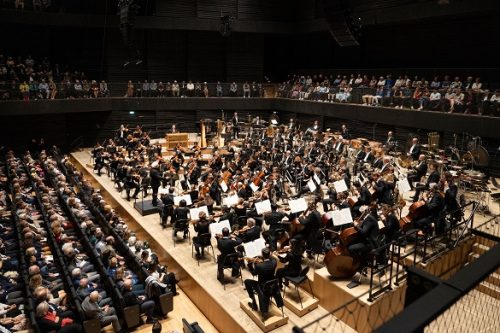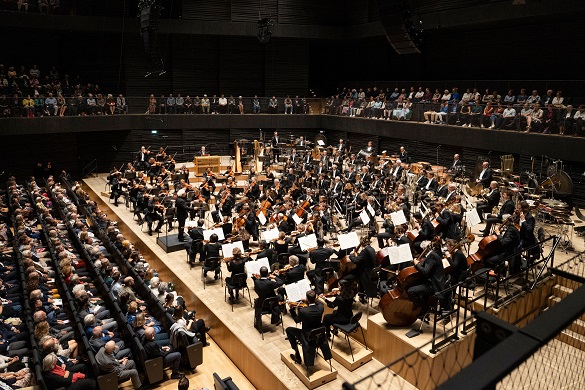 Germany Jolas, Mahler: Symphonieorchester des Bayerischen Rundfunks / Sir Simon Rattle (conductor). Isar Philharmonie, Munich, 28.9.2023. (ALL)
Germany Jolas, Mahler: Symphonieorchester des Bayerischen Rundfunks / Sir Simon Rattle (conductor). Isar Philharmonie, Munich, 28.9.2023. (ALL)

Betsy Jolas – Latest (German premiere)
Mahler – Symphony No.6 ‘The Tragic’
Latest is the latest work composed to date by 97-year-old Betsy Jolas. It was premiered last November by the Orchestre de Paris under the baton of Klaus Mäkelä. It consists of a series of very short orchestral vignettes demonstrating Jolas’s ability to discover a myriad of orchestral sounds, from the caressing of a real chain to the ending with musicians speaking. While the work has originality and imagination, it comes at the expense of a clear line and genuine atmosphere. It feels like an abstract intellectual exercise that leaves one somewhat unsatisfied and was not worthy of pairing with the Mahler.
Gustav Mahler’s Sixth Symphony, on the other hand, is a much more substantial piece of music. It holds a special place in the repertoire of Sir Simon Rattle. He programmed it for his first concert in 1987 with the Berlin Philharmonic and again for his farewell as its musical director. He played it often with the City of Birmingham Symphony Orchestra.
From Boulez to Abbado, Karajan to Bernstein, this symphony has always inspired the greatest musicians. It feels classical, with the first movement adopting a sonata form with a recapitulation and recognizable march themes. Mahler himself altered the symphony’s structure, swapping the Scherzo and Andante to avoid having two consecutive movements with too similar rhythms. But beneath these ‘accessible’ forms lies a modern work, richly orchestrated and powerful. It culminates in a monumental half-hour Finale that Herbert von Karajan described as one of the few works without a ‘happy ending’, featuring two – or three – hammer blows since Mahler revised the original score, allowing for multiple possibilities symbolizing the composer’s personal tragedies.

The symphony is indeed ‘tragic’, but Rattle’s interpretation was assertive. There was a certain flexibility in tempi, but it leant more towards acceleration than slowing down and languishing, in contrast to many conductors who tend to sentimentalize certain passages. The tension never dropped in the formidable first movement. The musicians displayed an ability to pass themes seamlessly from one section to another in the Andante moderato, beautifully cantabile. The breathless and nervy Scherzo was particularly successful. After everything we had heard, there was no need to overdo it in the Finale, and no need to add that final hammer blow. Once again, Rattle demonstrated his deep understanding of this work, with his comprehensive interpretation and ideas.
The instrumental level was very high. The orchestra played with a wealth of colors and homogeneity. The balance and polyphony so typical of Mahler was carefully realized. Significantly, at the end of the symphony, Rattle had the entire orchestra stand up. However, it was worth highlighting the remarkable contributions of Stefan Schilli on the oboe, Zoltán Mácsai, usually a principal in Dresden, on the horn, Felix Eckert on the trombone and Magdalena Hoffmann on the harp.
Mahler will be celebrated once again in Munich next week, as Kirill Petrenko returns to the Staatsoper for three sold-out performances of the Symphony of a Thousand, and Sir Simon Rattle will conduct the Bavarian Youth Orchestra in the First Symphony in January of next year.
Antoine Lévy-Leboyer
